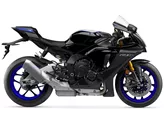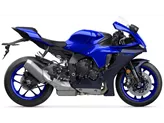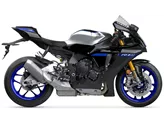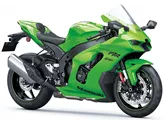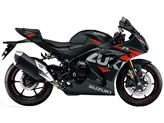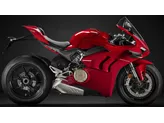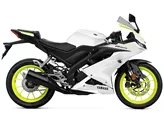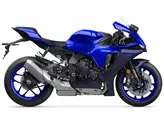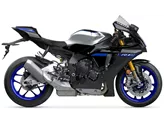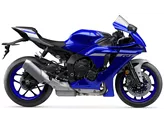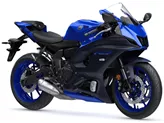Yamaha R1 2015 vs. Suzuki GSX-R 1000 2017

Yamaha R1 2015

Suzuki GSX-R 1000 2017
Overview - Yamaha R1 2015 vs Suzuki GSX-R 1000 2017
The Yamaha R1 2015 and the Suzuki GSX-R 1000 2017 are both powerful and high-performance supersport motorcycles. Let's compare their technical specifications and strengths and weaknesses.
In terms of engine and drive train, the Yamaha R1 2015 has a bore of 79 mm and a stroke of 50.9 mm, while the Suzuki GSX-R 1000 2017 has a bore of 76 mm and a stroke of 55.1 mm. The Yamaha R1 has an engine power of 200 HP and a torque of 112.4 Nm, while the Suzuki GSX-R 1000 has a slightly higher engine power of 202 HP and a torque of 118 Nm. Both bikes have a compression ratio of around 13 and are equipped with a 4-cylinder DOHC engine. The Yamaha R1 has a displacement of 998 ccm, while the Suzuki GSX-R 1000 has a displacement of 999 ccm.
In terms of suspension, both bikes feature upside-down telescopic forks at the front. The chassis of both bikes is made of aluminum, providing a lightweight and rigid structure. The Yamaha R1 has a Deltabox frame, while the Suzuki GSX-R 1000 has a Twin Tube, Twin-Spar frame.

Yamaha R1 2015
Both bikes have double disk brakes at the front, ensuring excellent stopping power. The Yamaha R1 is equipped with advanced rider assistance systems such as launch control and traction control. On the other hand, the Suzuki GSX-R 1000 comes with additional advanced rider assistance systems including ABS, riding modes, ride by wire, and traction control.
In terms of dimensions and weights, both bikes have a front tire width of 120 mm and a rear tire width of 190 mm, with a diameter of 17 inches for both front and rear tires. The Yamaha R1 has a wheelbase of 1405 mm, while the Suzuki GSX-R 1000 has a slightly longer wheelbase of 1410 mm. The seat height of the Yamaha R1 is 855 mm, while the Suzuki GSX-R 1000 has a slightly lower seat height of 825 mm. The kerb weight of the Yamaha R1 is 199 kg, while the Suzuki GSX-R 1000 is slightly heavier at 202 kg. Both bikes have a fuel tank capacity of around 17 liters, with the Suzuki GSX-R 1000 having a slightly larger capacity of 17.5 liters.
Now let's discuss the strengths and weaknesses of each bike. The Yamaha R1 2015 is known for its crazy sound and rev-happy engine with a strong peak. It provides a great racing feeling in the saddle and has a superior electronics package. The high-quality workmanship of the Yamaha R1 is also worth mentioning.

Suzuki GSX-R 1000 2017
On the other hand, the Suzuki GSX-R 1000 2017 is praised for its high-revving engine and a torque curve without any dents. It is super stable on corner exit and radius, making it a great choice for fast tracks. The bike also features a great quickshifter and a high-quality chassis.
However, the Yamaha R1 2015 does have some weaknesses. It experiences torque sag in the middle and lacks stability in the braking zone. On the other hand, the Suzuki GSX-R 1000 2017 has a weakness in that its engine brake is not adjustable.
In conclusion, both the Yamaha R1 2015 and the Suzuki GSX-R 1000 2017 are powerful and high-performance supersport motorcycles. They have their own strengths and weaknesses, and the choice between them ultimately depends on the rider's preferences and priorities.
Technical Specifications Yamaha R1 2015 compared to Suzuki GSX-R 1000 2017
Pros and Cons in comparison
Pros and Cons in comparison
Yamaha R1 2015

The new R1 is a big hit and no longer compares to the previous model. This was considered a good country road bike and heavy investments had to be made for excursions to the race track. Now it is the other way round. The new R1 has been developed with a clear focus on the race track. The electronics package seems outstanding, technology freaks will get their money's worth. Yamaha fans have to buy it, they finally have a worthy motorbike. The R1 has slight weaknesses when braking - it becomes a little unstable here. If you want to buy a ready-made racing bike without having to work on the chassis, you'd better go for the R1M. The Öhlins electronic suspension works perfectly and has no weaknesses. For pure racetrack use, the second weakness of the R1 can easily be ironed out. The torque hole in the middle can be easily ironed out with a new mapping.
Suzuki GSX-R 1000 2017

Suzuki has done a great job with the GSX-R 1000 2017. A super-strong motorbike with a fabulously smooth torque curve. Actually unbelievable at 202 hp! The chassis is of high quality and the electronics package has no tinsel but delivers top performance.
Price Comparison Avarage Market Price Yamaha R1 vs Suzuki GSX-R 1000
There are a few key differences between a Yamaha R1 2015 and a Suzuki GSX-R 1000 2017. It takes less time to sell a Yamaha R1 with 76 days compared to 121 days for a Suzuki GSX-R 1000. Since model year 2005 1000PS.de editors have written 80 reviews for the Yamaha R1 and 71 reviews for the Suzuki GSX-R 1000 since model year 2005. The first review for the Yamaha R1 was published on 28/04/2003 and now has more than 3,900 views. This compares to more than 7,100 views for the first review on Suzuki GSX-R 1000 published on 03/03/2004.



